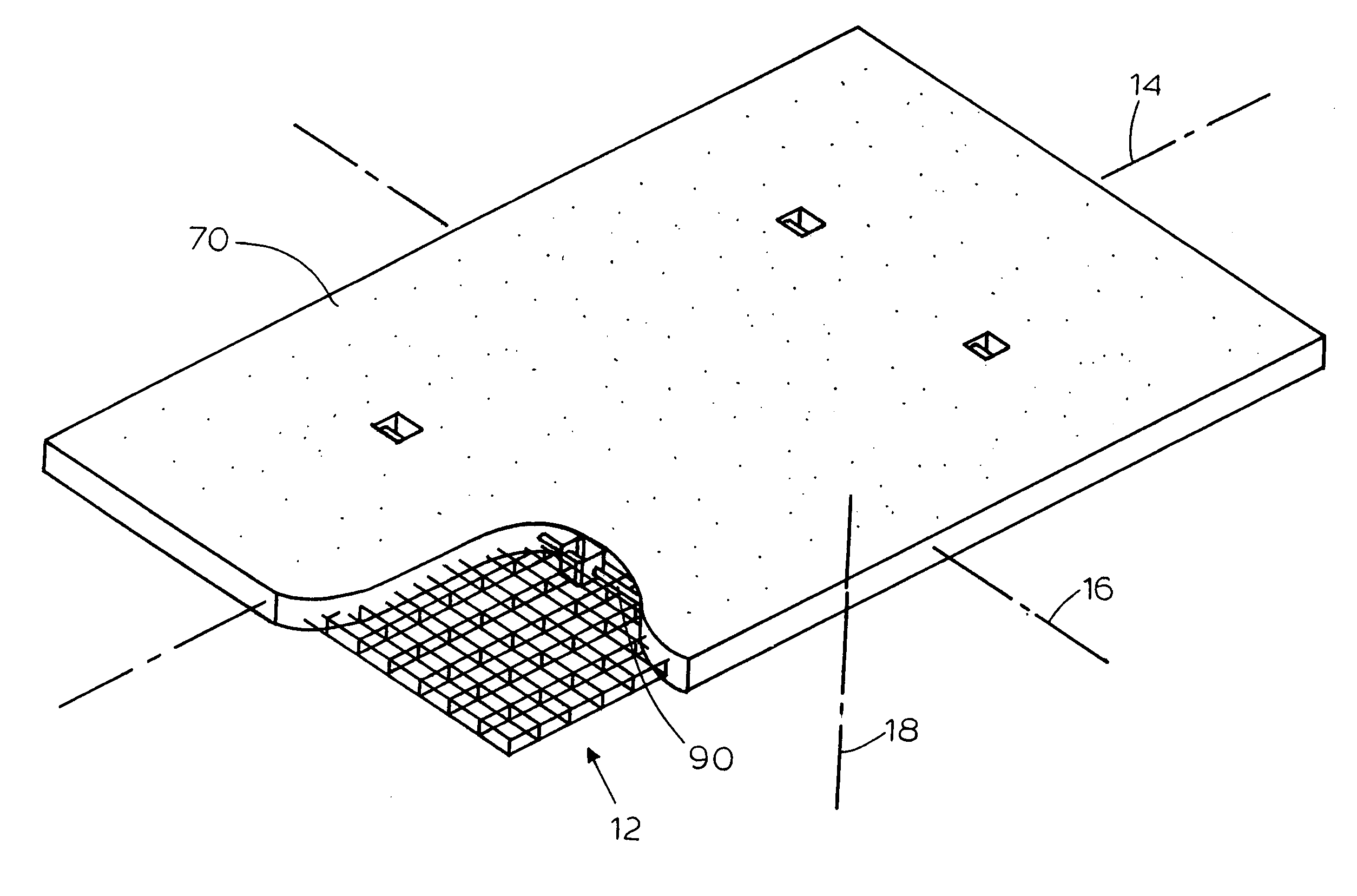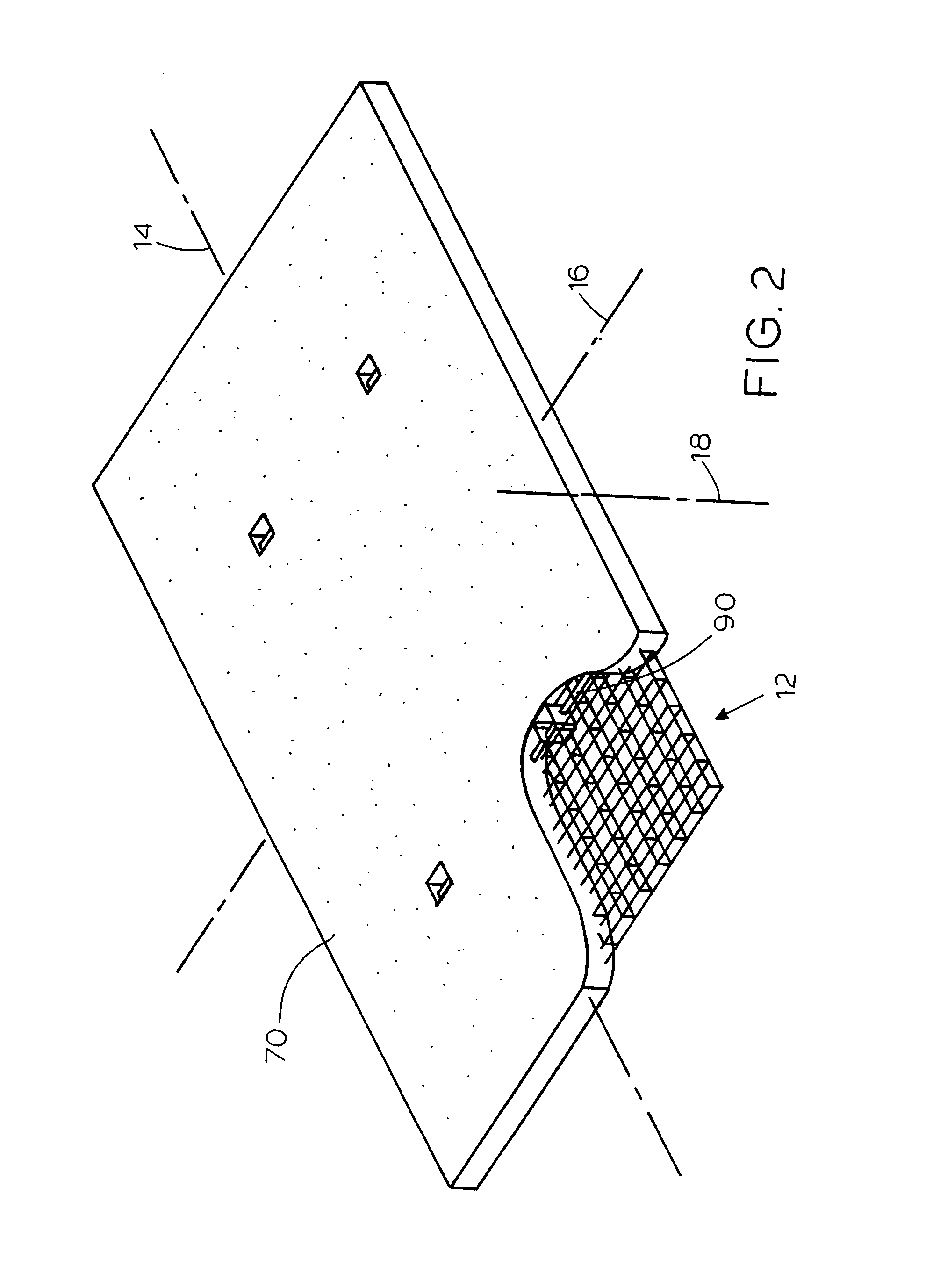Temporary road element
a technology of temporary roads and components, applied in the field of roadways, can solve the problems of extreme conditions of roads, roads that cannot be driven across scraped or unprepared ground surfaces, roads that cannot be driven across extremely rugged and uneven terrain, etc., and achieve the effect of stable, secure and long-lasting
- Summary
- Abstract
- Description
- Claims
- Application Information
AI Technical Summary
Benefits of technology
Problems solved by technology
Method used
Image
Examples
Embodiment Construction
[0030]Referring to the figures, it can be understood that the present invention is embodied in a temporary road element 10 that achieves the above-stated objectives.
[0031]Element 10 comprises a one-piece cage 12. Cage 12 is described herein as being “one-piece” in that it is monolithic and is formed to be a one-piece element as opposed to a plurality of connected parts. Being one-piece, cage 12 has excellent strength characteristics which can withstand thousands of tons of load without permanently deforming, has good temperature resistance even when subjected to extreme temperature conditions, such as might occur in the arctic or the like, yet is flexible enough to conform to extremely uneven terrain in a manner that will properly support heavy vehicular traffic. The one-piece feature of mat 10 also makes that mat durable so that it can be left unattended for great lengths of time.
[0032]One-piece cage 12 is best shown in FIGS. 2-4 and includes a longitudinal axis 14, a transverse ax...
PUM
| Property | Measurement | Unit |
|---|---|---|
| flexible | aaaaa | aaaaa |
| pressure | aaaaa | aaaaa |
| thickness | aaaaa | aaaaa |
Abstract
Description
Claims
Application Information
 Login to View More
Login to View More - R&D
- Intellectual Property
- Life Sciences
- Materials
- Tech Scout
- Unparalleled Data Quality
- Higher Quality Content
- 60% Fewer Hallucinations
Browse by: Latest US Patents, China's latest patents, Technical Efficacy Thesaurus, Application Domain, Technology Topic, Popular Technical Reports.
© 2025 PatSnap. All rights reserved.Legal|Privacy policy|Modern Slavery Act Transparency Statement|Sitemap|About US| Contact US: help@patsnap.com



